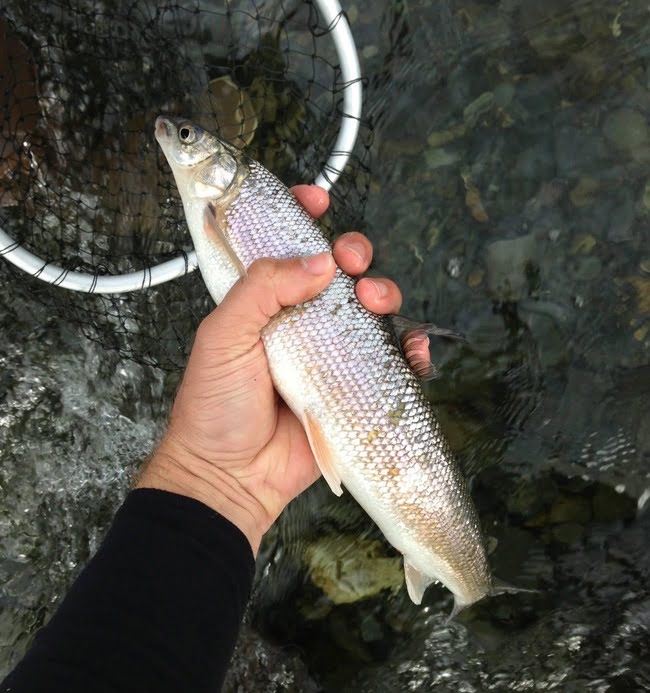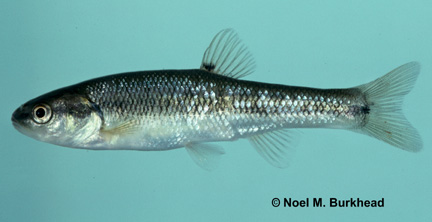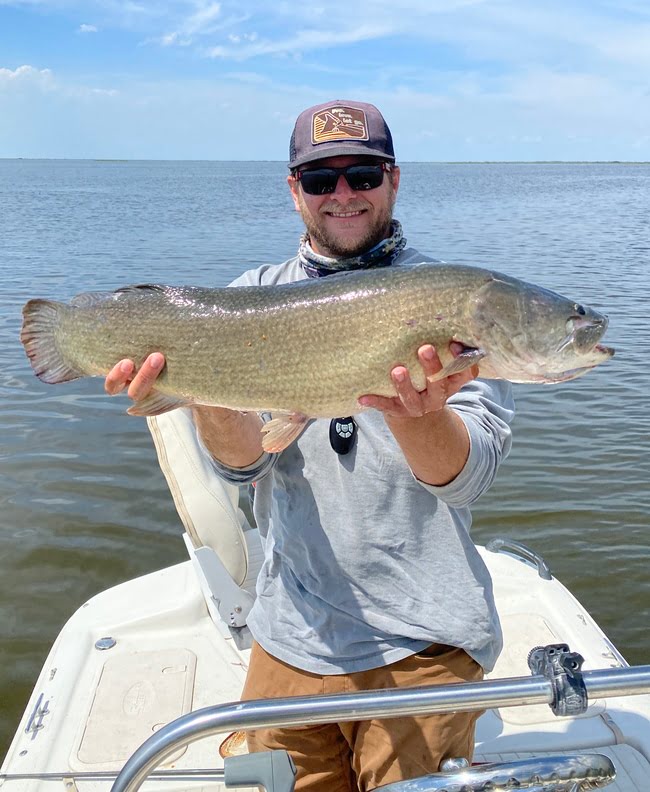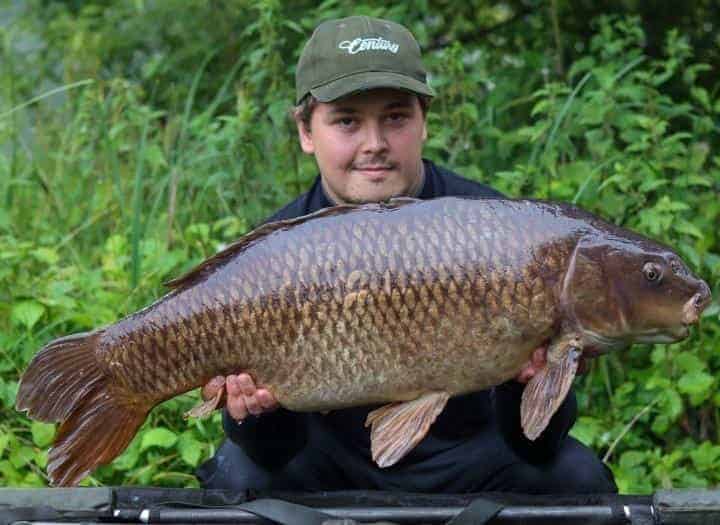“Oh, that? That’s just a trash fish.”
Many an angler has heard this line before from an old timer, social media personality, or other fishing gurus who only target the ‘big ones.’
This sentiment makes sense if your primary goal from fishing is a trophy bass or other popular game fish. For many anglers, however, the goal is simpler: catching fish!
There are more than 800 recognized species of freshwater fish in North America, and somehow the vast majority of them have been labeled as not worth catching (or ignored entirely) by the wider angling community.
Many of these fish fall into the category of ‘rough fish’.
Not only are these natives a blast to catch if you give them a shot, but they also serve important ecological roles and often look downright beautiful.
So grab your rod, and let us explore the weird and wonderful world of rough fish!
Table of Contents
What Species Are Considered Rough Fish?
The term rough fish is broadly applied to any species of freshwater fish that is undesirable. Originally this stemmed from its market value as a food fish but has grown to be a colloquial term for any fish that has no food or sporting value.
Simply put, rough fish are just not in the ‘cool kids’ club.
Rarely are they specifically targeted, they don’t make the cover of fishing magazines, and they are almost never eaten for food or kept for trophy wall mounts.
Examples include various species of gar, carp, chubs, suckers, catfish, drum, and even eels.
Where Can I Find Rough Fish?
While different species live in different areas, you’ll find something nearly everywhere!
Small creeks, larger rivers, lakes, you name it and most likely a hungry rough fish likely lives there.
I often find rough fish in the overlooked areas: flooded swamps, muddy coves, urban canals, and backwater creeks. But to really find them, you need to brush up on your fish identification and understand these unique fish.
Popular Rough Fish That Deserve More Credit
When my grandfather went fishing, it wasn’t for fun, or entertainment. It was for food, plain and simple.
When my dad went fishing, it was a bit of a hybrid approach. He fished for food, but also did it for fun. He enjoys taking photos and loves to catch big bass and catfish.
And now when I fish, I am interested in all species of fish. Not just the flashy gamefish that get all the attention.
In fact, many of the rough fish that are overlooked by anglers offer some really amazing fishing opportunities. And I’ve come to appreciate them, especially the mighty bowfin (more on that below).
Anyway, these rough fish have grown a following of ‘life listers’ and micro fishing enthusiasts; folks who appreciate all species of fish regardless of their status in the mainstream sportfishing world.
Below are a few notable rough fish that deserve some recognition!
White Sucker: The Miniature Goliath
The family Catostomidae is fairly closely related to the chub and minnow family, but they have given up their opportunistic feeding lifestyle for that of a bottom feeder.
Their mouth often looks like a suction cup, giving them their name. The white sucker (Catostomus commersonii) is the most widespread of these species, living in many of the same areas that creek chubs do.

Your best shot at finding white suckers are in slow, wide and flat areas of creekbed (shallow or deep). You’ll often be able to see white suckers slowly working their way along the bottom, sifting through the silt.
A simple worm on a hook allowed to slowly sink to the bottom is a good bet for attracting a bite!
White suckers are an important detritivore and help tremendously in keeping their waters clean. They are intolerant of pollution, and being able to find one is a good sign that the waterway you’re fishing is very clean.
These special scavengers deserve the appreciation of all anglers!
These fish are targeted even less often than chubs because they require a little more convincing to bite. However, they can also grow a few inches longer and can put up a good fight, so they are worth going after if you see them.
Chubs: The Mightiest of Minnows
Anyone who’s fished in small to medium creeks in the eastern U.S. has likely seen these little champs in abundance.

While many members of the minnow family Leuciscinae are too small to catch on anything but micro tackle, chub species can grow up to a foot long, large enough to bite anything that bluegill or small bass would!
While there are many species of chub found across the country, the most abundant of these species is the creek chub (Semotilus atromaculatus), which can be found throughout the entire Eastern U.S. north of Georgia, and throughout the Great Lakes region.
They inhabit deeper, slow-moving pools in small creeks. They’re opportunistic feeders and will bite bread, worms, and small lures or spinners.
The fallfish (Semotilus corporalis) deserves a mention as the creek chub’s bigger, meaner cousin. Its range is more limited to the Northeastern U.S, specifically in the Appalachian foothills.
It often shares a habitat with stocked trout (and is called a trash fish by many a trout angler), so it needs to bulk up to compete!
See Also: Minnows vs Shiners: Understanding The Difference
Bowfin: The Prehistoric Monster
What fish is larger than a bass, has an iron skull, and can breathe air? The Bowfin (Amia calva) manages to meet all these criteria, and yet it is still regarded as a trash fish in many areas because its flesh isn’t that tasty.
The bowfin is the last surviving member of the family Amiidae, which dates all the way back to the Jurassic Period around 200 million years ago!
They live in oxygen-poor swamps and marshes and can gulp in the air from the surface to breathe a little easier. That makes my home state of Florida one of the top bowfin destinations in the world, and I’ve caught some giants!

Bowfin can be found in stagnant swamps across the Eastern U.S. and often shares a habitat with largemouth bass. The best way to target them is just to bass fish, as they will respond aggressively to the same tactics.
If you’re alright with catch-and-release, then the bowfin is just as much of a prize as any trophy bass!
Common Carp: Loved Everywhere But Here
While the common carp (Cyprinius carpio) is regarded as a trash fish in the U.S, we’re the outliers here…the carp is actually the most commonly sought after game fish in the entire world!
European and Asian anglers seek legendary carp just as feverishly as we Yanks chase after giant bass. They eat almost anything (white bread balls are a good bet), fight like a freight train when hooked, and even taste great when properly prepared (they were first brought to the states as a food fish).
This cultural disconnect has led to waters all across the U.S. hosting some of the world’s largest carp, and they’re under almost no pressure from anglers.

In large rivers and lakes, monsters weighing in at over 100 pounds can be caught with relatively little coaxing compared to their siblings abroad!
Their perception has slowly begun to shift, and more anglers are slowly figuring out why these beasts are so beloved elsewhere- so get out there and hook one while it’s still easy.
Final Thoughts
The world of fishing is much larger than many people realize, and some of my best memories are of fishing in areas and for species that most anglers just don’t bother with.
This list isn’t even close to exhaustive, as there are literally hundreds of species to choose from, and your area probably has many unique fishing opportunities that can be found nowhere else.
So get rigged up and get fishing- who knows what kind of rough fish you might find?
Thanks for reading.
You May Also Like: Carp vs Bass: Friendly Duo Or Harmful To Fishing?
If you haven’t guessed yet, I love fishing and everything about it!
To learn more about why I started Panfish Nation, visit the About page and follow along on Social Media:


Download a copy of my FREE Lure Color Selection Chart & Knot Guide!
Stay up to date with fishing reports, tackle reviews, industry news, and much more! We respect your privacy, unsubscribe at any time.
